The Fehérvári Roundel of Buda Castle, as it can be seen today, was built barely 70 years ago, in the early nineteen-fifties. Nevertheless, the structure is in such a bad condition that it cannot be repaired and must be demolished and rebuilt. Reconstruction will begin in the first half of 2021, but Várkapitányság has already carried out preparatory work. Geophysical research was conducted into possible constructed elements, and the condition of the roundel and connecting castle walls were analysed through trenches. Archaeological test excavations were carried out in the area by the Budapest History Museum.
The demolition will happen under archaeological observation to ensure that the historical and archaeological layers of the fortress are not damaged. Further excavations will be conducted inside roundel.
– Béla Harman, project manager at Várkapitányság and Zoltán Fullár, Head of the Archaeological Office at Várkapitányság, told PestBuda. Construction will use the stones of the current bastion, while the parapet of the ramparts will be slightly lower than their current height to match the height of the castle walls. A major goal of the reconstruction is to enable visitors to walk from the roundel along the western castle wall, beside Archduke Joseph's Palace, currently under reconstruction, to Beggar's Gate (also known as Hollós Gate), and the Csikós Courtyard.
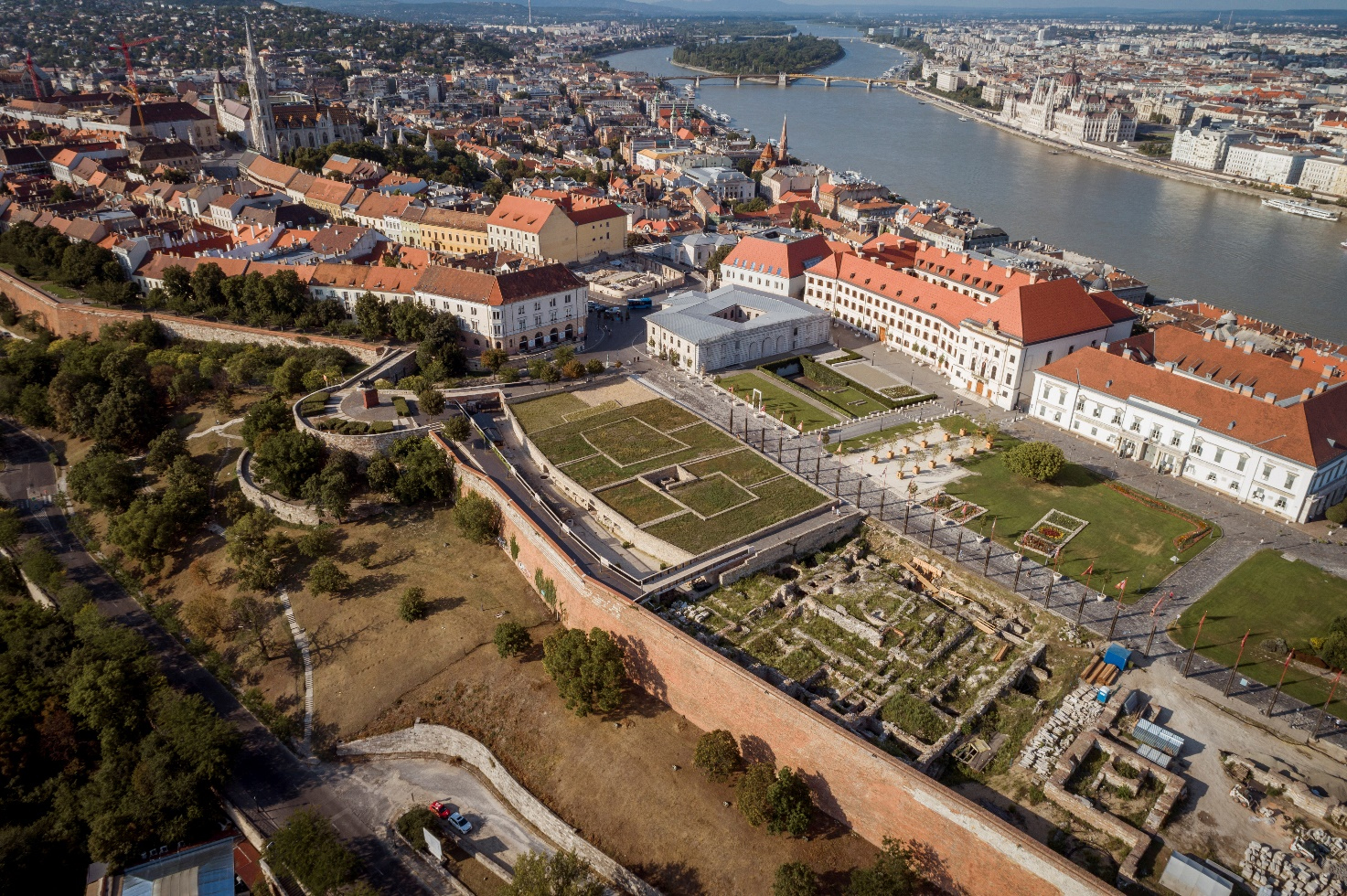
Changes can be spotted easily when compared to the current situation. The stone wall below the current roundel, which follows the arch of the bastion, reveals the structure's original size from the 17th century. During the Ottoman wars and the 1848 revolution, the roundel was bigger than it is today (Photo: Várkapitányság NZrt./Karolina Kárász)
Simultaneously with the renovation of the roundel, the equestrian statue of Artúr Görgei, the commander-in-chief of the 1848–49 War of Independence will be removed for renovation in cooperation with the Budavár Local Council. The statue was erected on the roundel in 1998. The statue by László Marton is noteworthy because it was created based on the Görgei statue created by György Vastagh Jr. in 1935, which was torn down in the Second World War and later melted into a Stalin monument. (The original statue stood next to the Museum of Military History on the Esztergomi Roundel.) The pedestal of the statue also has its own history. Before holding the current statue, it has supported statues of both Stalin and Lenin on what is today Ötvenhatosok Square. After the restoration, the beautified statue will be returned to its current location.
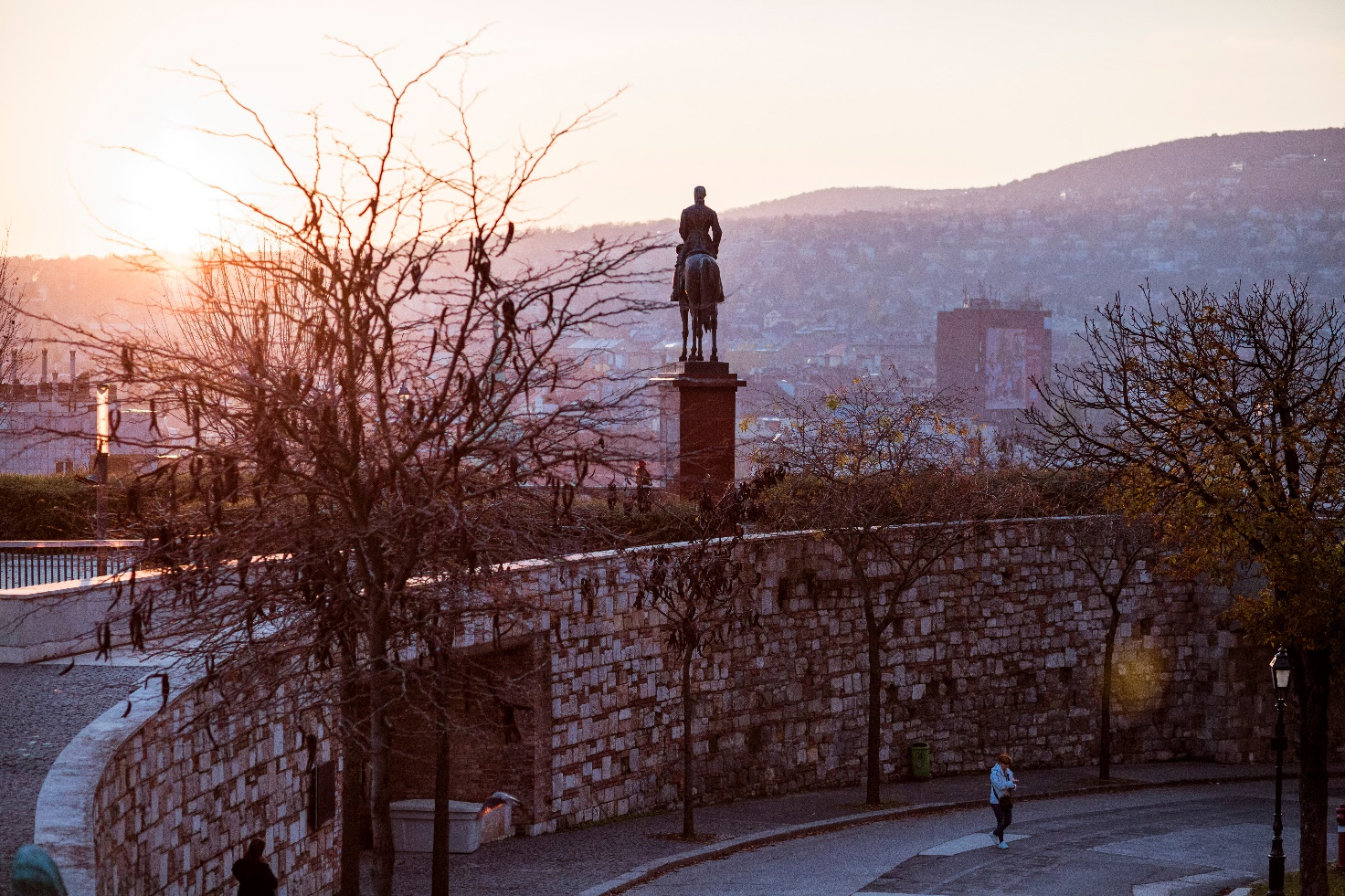 The statue of Artúr Görgei on the Fehérvári Roundel, erected in 1998 will be restored (Photo: Várkapitányság Nzrt./Karolina Kárász)
The statue of Artúr Görgei on the Fehérvári Roundel, erected in 1998 will be restored (Photo: Várkapitányság Nzrt./Karolina Kárász)
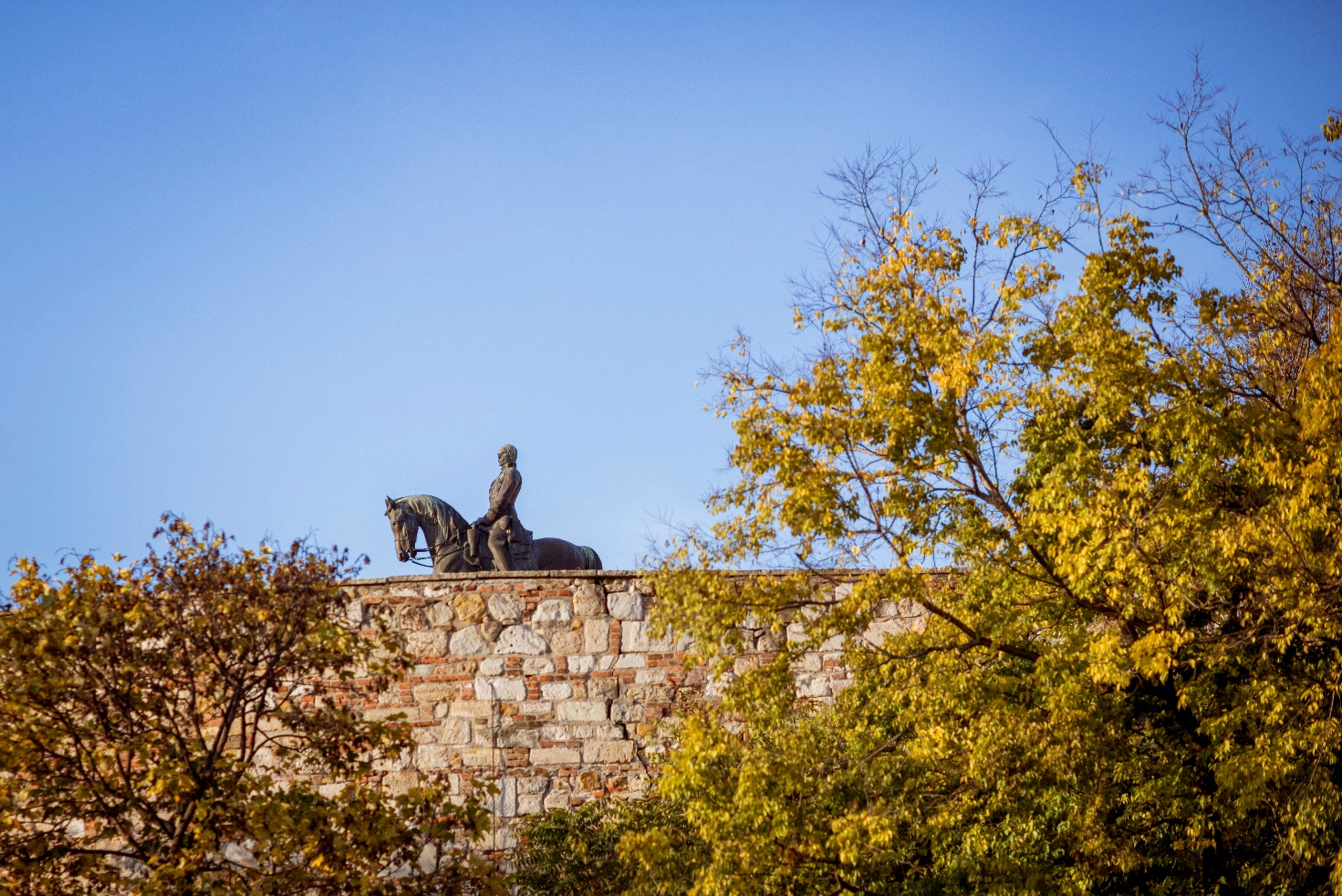
The Görgei statue will be returned to the Fehérvári Roundel after its restoration (Photo: Várkapitányság Nzrt./Karolina Kárász)
A museum of gardening history and Várgarázs III will be built near the roundel
In addition, a new parking garage with 300 spaces, Várgarázs III, will be constructed underground outside the castle walls between the Fehérvári Roundel and the Karakas Pasha tower. Above the garage, instead of the currently neglected western gardens, an interesting area showcasing the once-famous vineyards of the Buda wine region, and the orchards of Buda will be created.
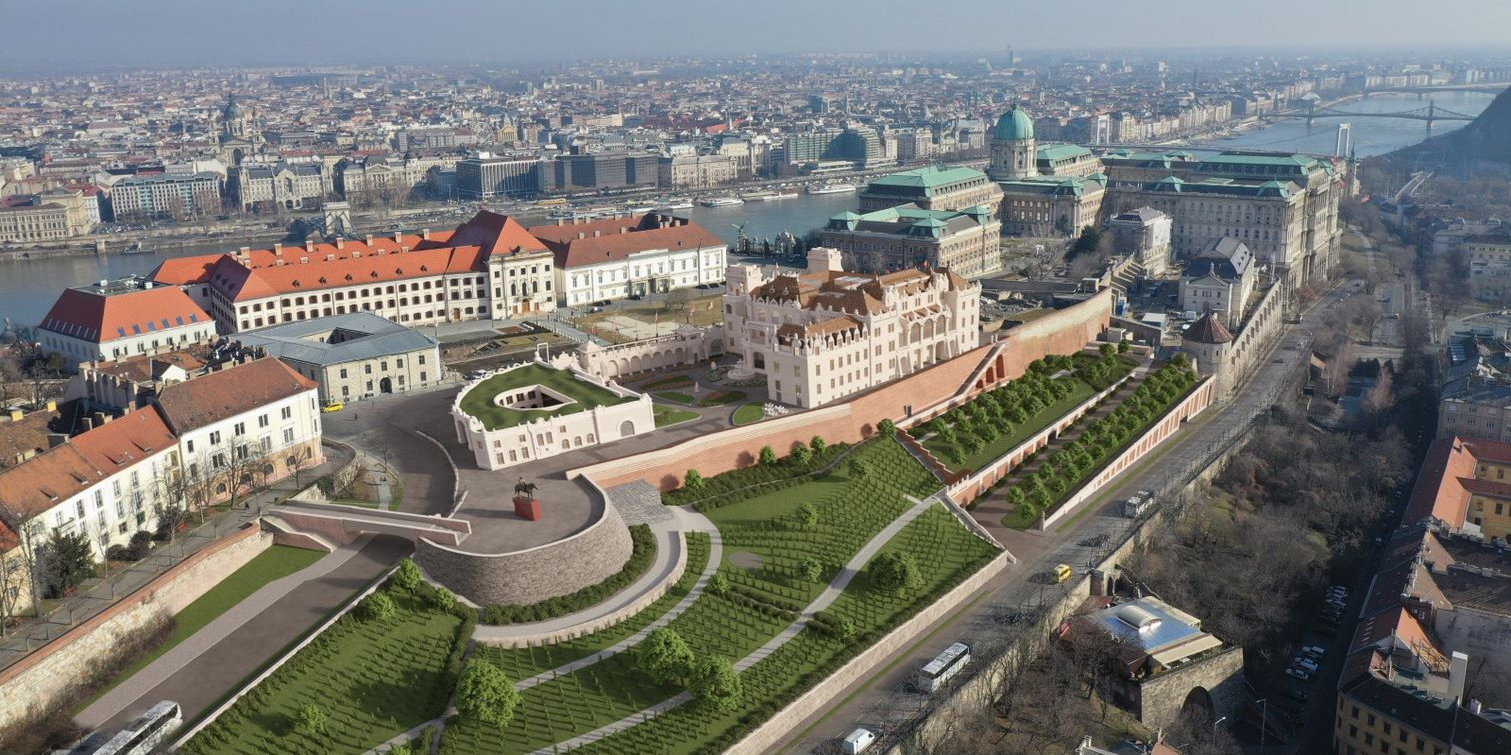
The gardens surrounding the renovated roundel will represent the former Buda wine region with grapevines and fruit trees
(Source: Várkapitányság Nzrt.)
The reborn gardens will be accessible not only from the roundel but from the castle walls as well, as the Ybl-staircase, which was demolished after World War II, will be rebuilt. It should be noted that several meters of topsoil will stand above the Castle Garage, providing enough space for the roots of the plants.
The Ybl retaining wall bordering the garden will also be rebuilt, this is the continuation of the retaining wall south of the Karakas Pasha tower, currently under renovation. The reconstruction will complete the walls south of roundel.
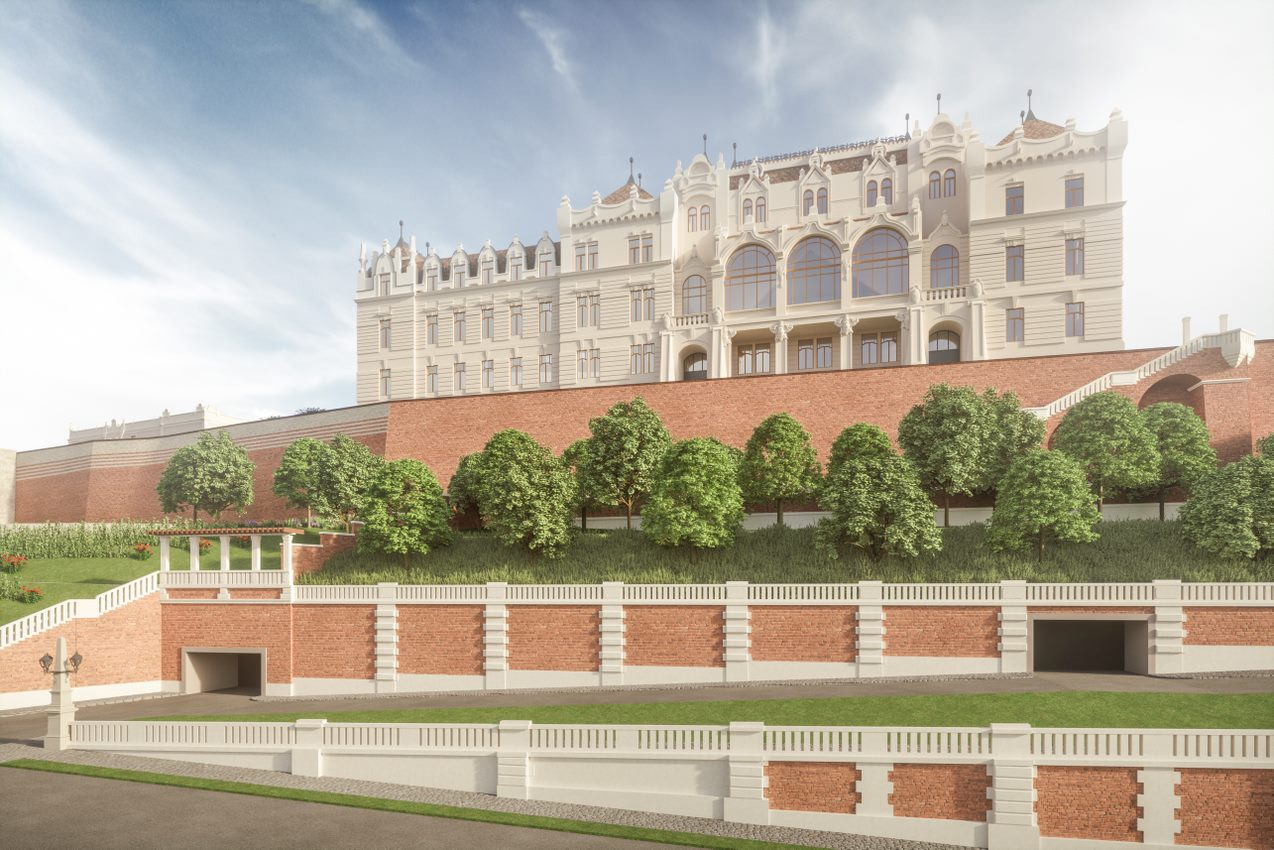
Continuation of the Ybl retaining wall with the entrance to Várgarázs III., Archduke Joseph's Palace and the Ybl Stairs in the background, these are also being rebuilt (Source: Várkapitányság Nzrt.)
The roundel played an important part in the reconquest of Buda and in 1849
The reconstruction of the roundel will give archaeologists a historic opportunity: comprehensive excavations have never been carried out inside the bastion, thus the artefacts hidden within are unknown. However, the history of the roundel can be reconstructed based on extant sources. This greatly helps the work of the experts, according to Zoltán Fullár.
The archaeologist of Várkapitányság told PestBuda:
The earliest, 16th-century depictions show not a roundel, but a square battery tower, which stood right next to what was then Jewish (later Fehérvár) Gate.
The shape of the building is in line with the system of fortifications in Buda Castle before the Ottoman Period. Such angular towers can be seen on the castle walls from the Árpád Age. However, in the 1540s, the tower was damaged significantly, and rebuilt as a roundel: thus from the end of the 16th century onwards, a roundel can be seen on all depictions.
As described by the Turkish traveller Evlia Cselebi, the edifice was expanded and rebuilt in the mid-1660s: this larger bastion has was later named the bastion of Pasha Kasim. A Turkish memorial plaque, commemorating the builder was also unearthed after the war.
The bastion served through the siege that led to the reconquest of Buda in this form. However, in 1723, the roundel was again damaged due to the explosion of the powder magazine during the great fire of Buda. When it was restored, it was rebuilt in a similar form to the previous bastion but received two new (one northern and one southern) cannon chambers. The location of the southern chamber has been known for some time, but only recent excavations found the floor of the northern chamber.
The roundel also played an important role in the War of Independence. In 1849 Hungarian troops breached the castle wall just south of it. This is why the statue of Artúr Görgei was erected here instead of the Esztergom Roundel.
The building was demolished in 1892, during the construction of the gardens and promenades below the Archduke Joseph's Palace. However, the demolition was not complete, it did not extend below ground. As a result, during earthworks after World War II, which preceded a mysteriously rapid reconstruction, the foundations of both the smaller 16th-century and the larger roundel were found. Eventually, the bastion was rebuilt along the line of the earlier, smaller arch, while the larger arch of Pasha Kasim's fortification became part of the walking paths in the garden. This solution, designed by László Gerő, who played a significant role in the reconstruction of Buda Castle, has been visible to the present day.
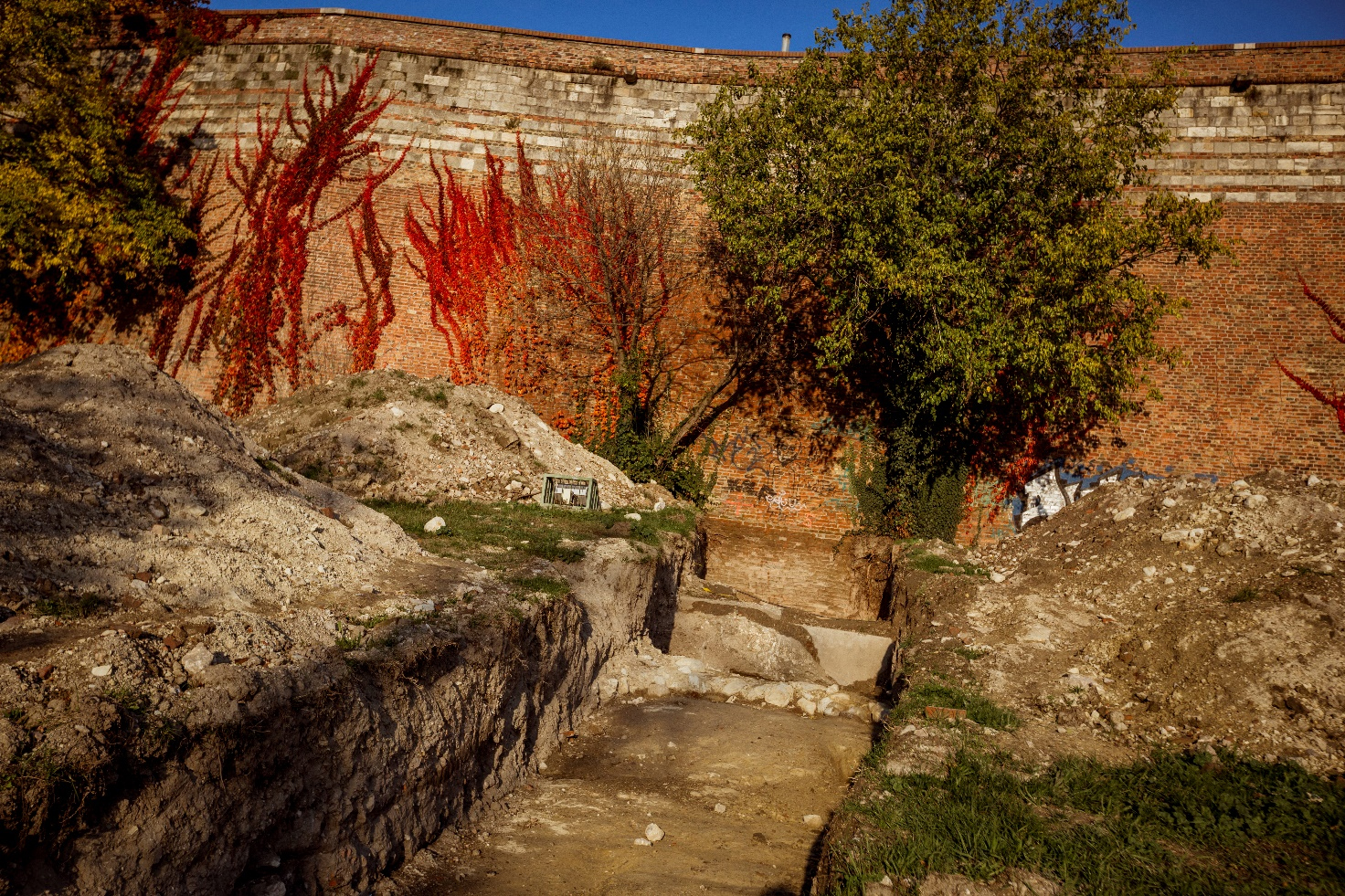
Excavations at the roundel (Photo: Várkapitányság NZrt./Karolina Kárász)
What is hidden inside the roundel?
Although excavations are still ongoing, artefacts from the Ottoman Period or even from before the Turkish conquest may emerge from inside the roundel. As noted above, neither its demolition in 1892 nor the reconstruction in 1950–51 touched the area east of the roundel significantly.
The interior of the roundel could hide debris from demolished buildings, similarly to the recently excavated cellar of the former Red Cross Headquarters on Dísz Square. Similar results are expected in the area south of the bastion, in the western gardens. A significant amount of debris was collected in the area during post-war landscaping, including ruins from Archduke Joseph's palace, which was demolished in 1968. There is still much to explore before construction can begin.
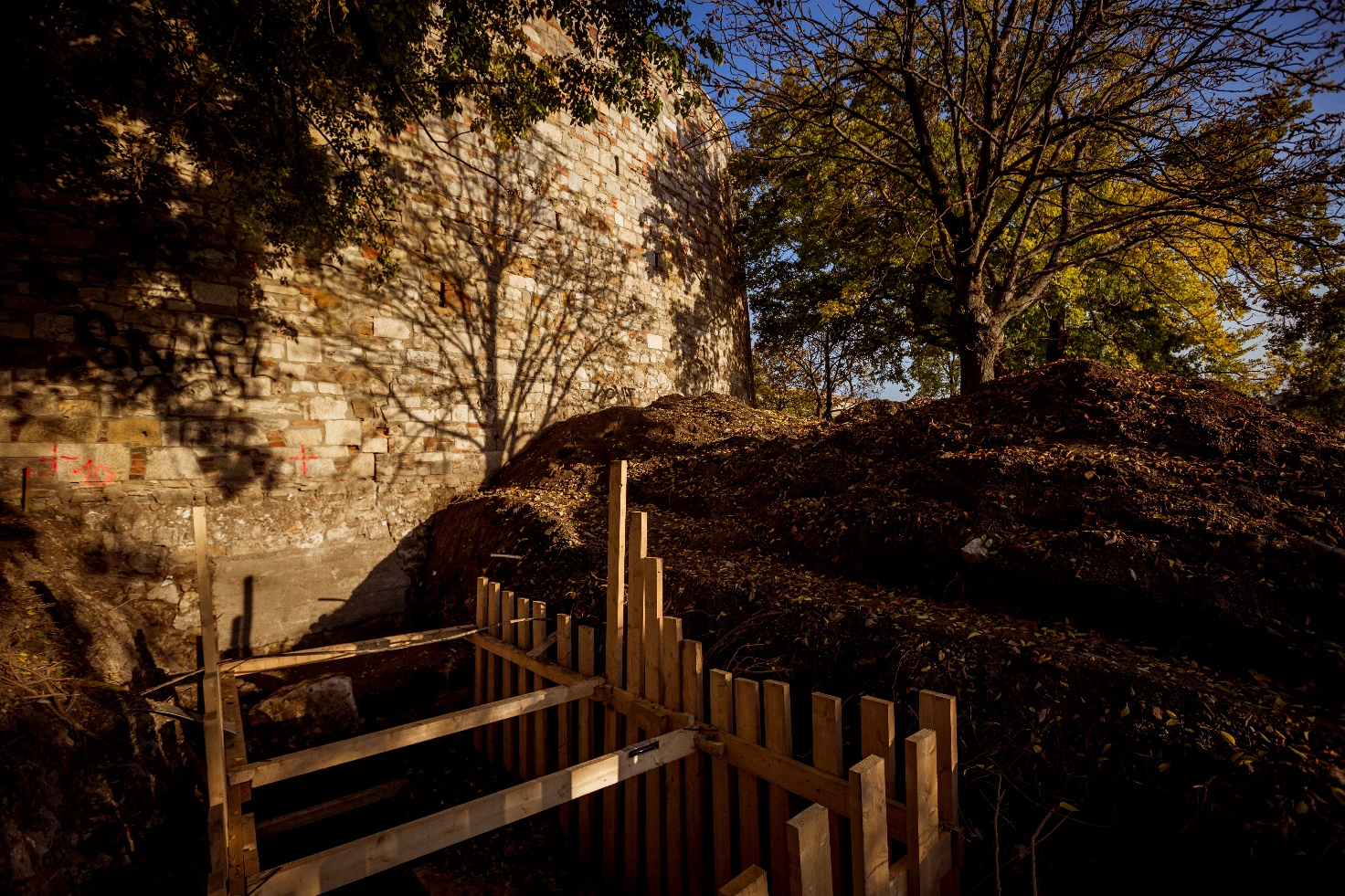
Excavations at the foot of the rondella (Photo: Várkapitányság NZrt./Karolina Kárász)
Nevertheless, the future is almost visible. The reconstruction will return unused, functionless parts of the Castle to the everyday life of the district – adding a new place for visitors to walk through and meet in within the ever-exciting Buda Castle.
The experts of Várkapitányság added that work would be carried out with as few disturbances to local residents as possible. The bridge connecting the roundel to the Arpád Tóth Promenada will be closed during the renovation, but traffic on Palota Road will flow without interruption.

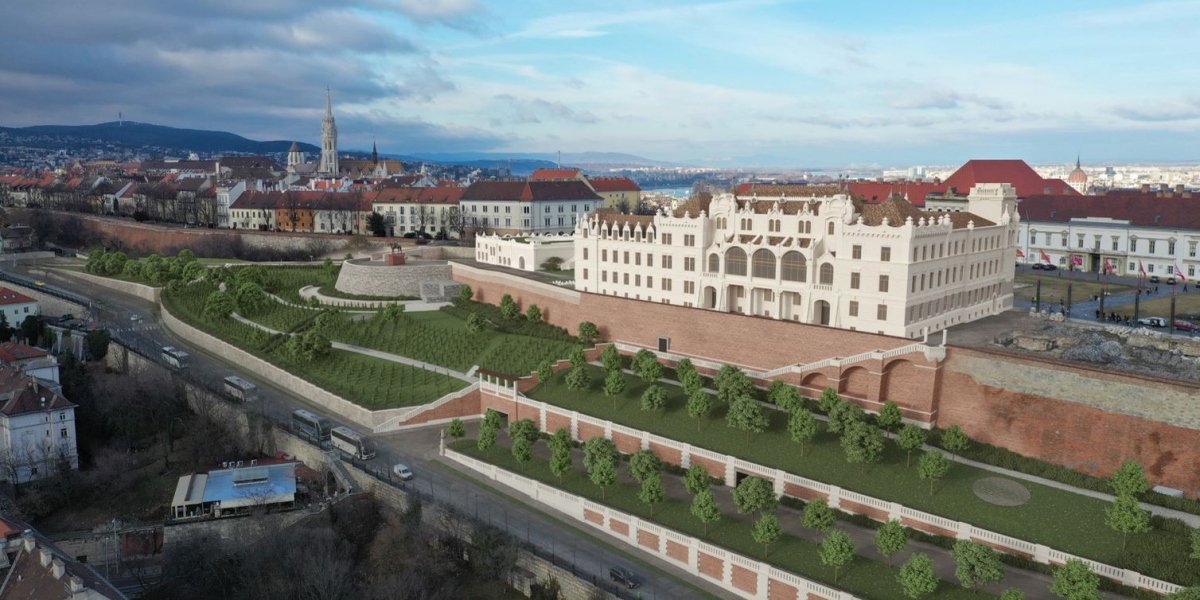






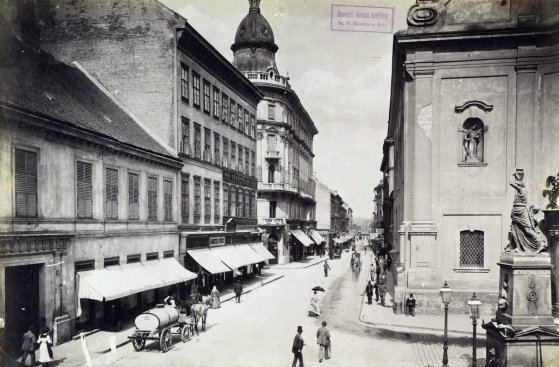




























Hozzászólások
Log in or register to comment!
Login Registration